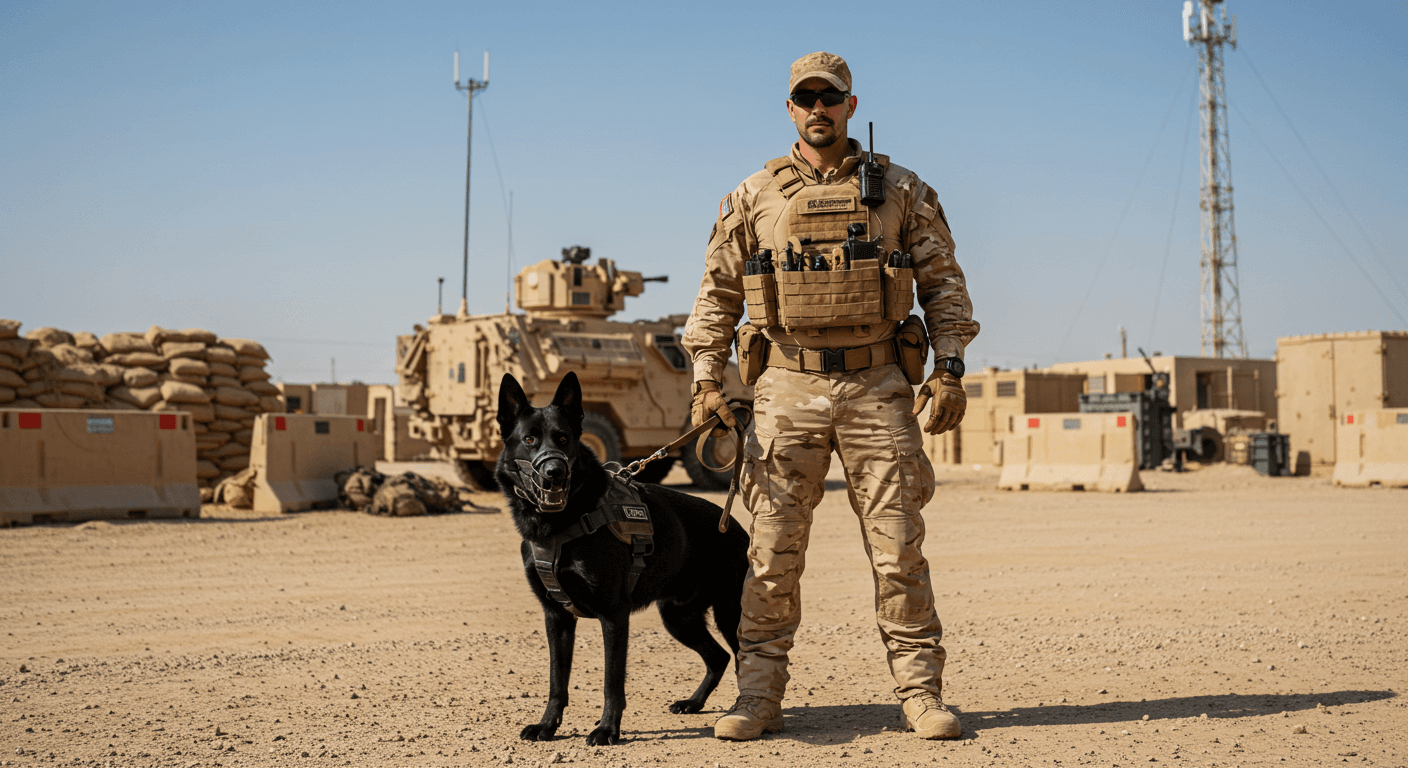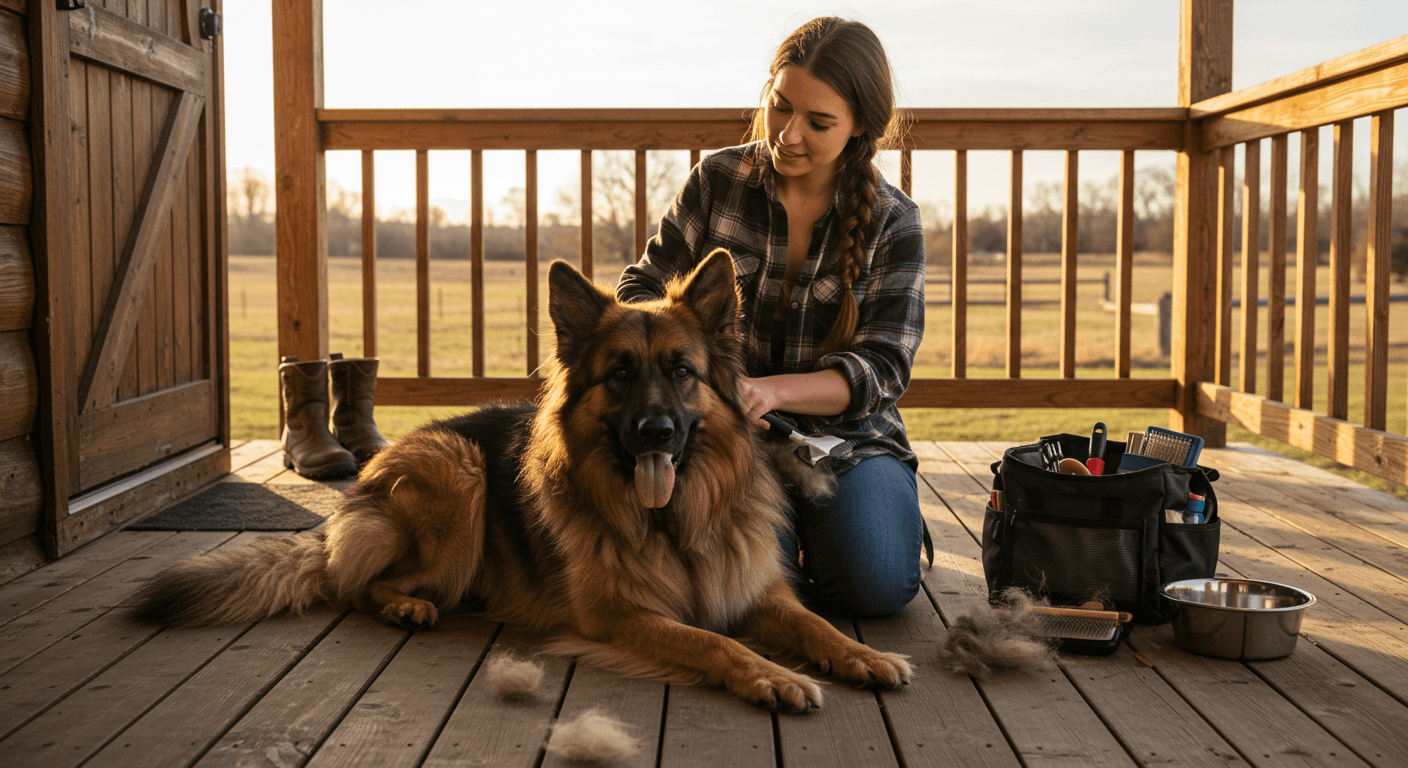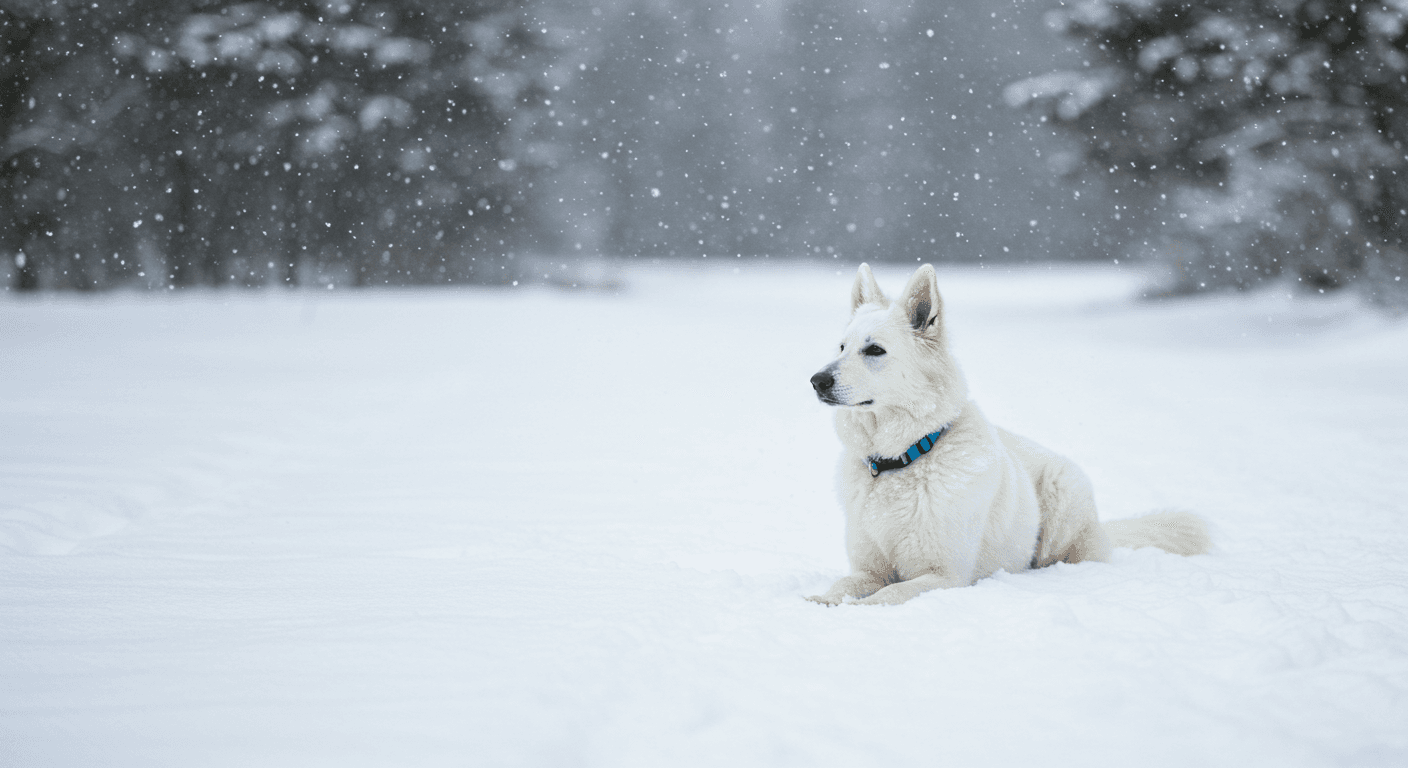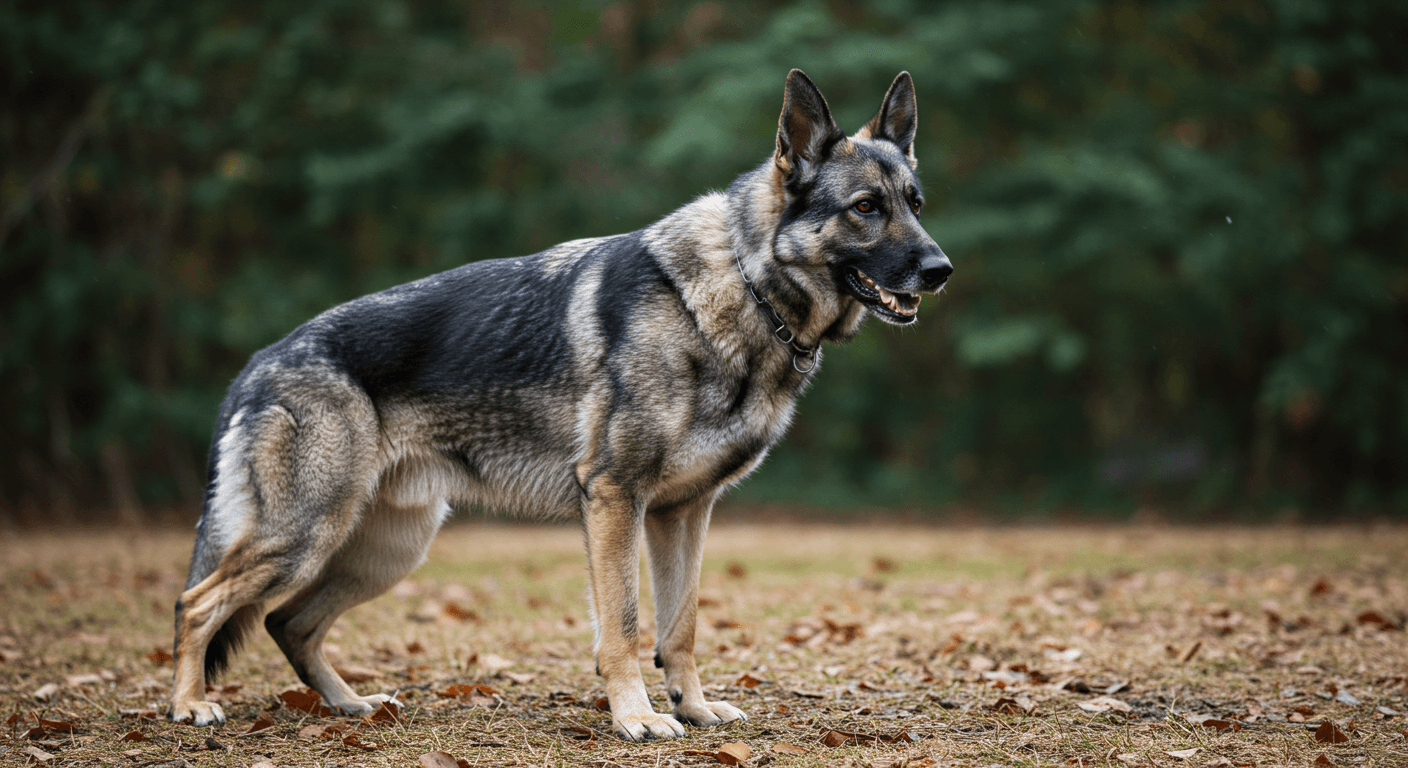German Shepherds are more than just loyal companions they’re also stunning dogs with a wide variety of coat types. If you’re a proud GSD owner or thinking about bringing one into your family, learning about the different types of German Shepherd coats is a fun and important part of understanding your pup’s unique look and needs.
Not all German Shepherds look exactly alike. You might have noticed some GSDs with fluffy fur, while others have short and smooth coats. Some have rich black and tan coloring, and others are solid white or even sable. These different coat styles and GSD colors can help you better care for your dog, especially when it comes to grooming and comfort.
In this guide, we’ll explore the main types of German Shepherd coats and how they affect your dog’s appearance, care routine, and even personality. Whether your GSD has a short coat or a long one, each type comes with its own charm and specific needs.
We’ll also look at how coat variations relate to different kinds of German Shepherds not just in looks, but sometimes in their original roles and behaviors too. That way, you’ll be able to spot the difference and choose the best options for your furry friend.
So, let’s dive into the colorful and diverse world of German Shepherd coats. Trust us, you’ll never look at your GSD the same way again!
Understanding the Types of German Shepherd Coats

If you're a proud German Shepherd owner, you’ve probably noticed there’s more to their look than just those pointy ears and smart eyes. One of the coolest things about German Shepherds is their variety of coats. In fact, there are several different types of German Shepherd coats, and each one is unique in its own way.
Understanding these coat types doesn't just help you recognize your GSD’s style it also helps you take better care of them. Some coats need more grooming, others do better in heat or cold, and knowing what kind of coat your dog has makes daily care much easier and more effective.
The main coat types you'll come across include the double-coated short hair, plush coat, and the beautiful long coat German Shepherd. So, whether you have a fluffy German Shepherd long hair or a sleek short haired German Shepherd, each type has its own needs and charm.
Most GSDs have double coats, which means two layers of fur: a soft undercoat and a tougher outer coat. While the short coat German Shepherd has a smooth, easy-to-maintain layer, long coats are extra fluffy and often need more brushing. No matter which coat your pup wears, it's part of what makes them special.
In the next sections, we’ll dive deeper into each of the types of German Shepherd coats, so you can learn how to care for your dog based on their special coat type. That way, your best friend can look and feel their absolute best all year round!
The Short-Haired German Shepherd

When people think of a classic German Shepherd, they often picture the short-haired variety. The short hair German Shepherd is one of the most recognizable types of German Shepherd coats. Their coat is sleek, dense, and lies close to the body, giving them a neat and tidy appearance that many dog lovers admire.
Short haired German Shepherds tend to thrive in warmer climates thanks to their low-maintenance coat. Their double coat still offers protection from the weather, but it doesn’t require as much grooming as longer-haired types. This makes them a great option for busy families or first-time GSD owners.
Despite their short fur, these dogs are big shedders especially during spring and fall. So, while you may not need to brush them daily, weekly grooming with a de-shedding tool can make a big difference in keeping your house clean and your dog comfortable.
Short haired German Shepherds are commonly seen in roles such as police, military, and service dogs. Why? Their manageable coat and athletic build make them easier to work with in fast-paced environments. But don’t worry they also make excellent family pets when trained and socialized well.
- Easy grooming: Less time brushing means more playtime with your pup.
- Weather-resilient double coat: Offers protection without too much fluff.
- Popular in working roles: Often chosen for jobs due to their practical coat and obedient nature.
- Year-round shedding: Regular brushing helps keep fur off your floors and furniture.
If you've been considering a German Shepherd and want a coat that's easier to handle, the short-haired German Shepherd is definitely worth a look. They offer strength, intelligence, and loyalty wrapped in a neat, easy-care package.
The Long-Haired German Shepherd

If you’ve ever met a long hair German Shepherd, you know right away they’re absolutely stunning. With their fluffy coats, regal appearance, and sweet personalities, this type of German Shepherd stands out in any crowd. But what makes them different from the standard short-haired variety?
A long coat German Shepherd has longer fur, especially around the ears, chest, tail, and back legs. Their hair is soft, flowing, and usually lacks the dense undercoat that short-haired GSDs have. This gives them a silky look but also means they might need more help staying warm during colder months.
While these dogs are just as loyal and smart as their short-haired siblings, they’re not always accepted in traditional dog shows due to breed standards. Still, the long hair German Shepherd makes an amazing family dog and is loved for more than just their good looks.
You might see different types of long-haired GSDs as well. For example, the black long haired German Shepherd looks striking with its shiny dark coat and yes, it’s just as affectionate and active as other GSDs!
- More grooming needs – Long coats can tangle and need regular brushing.
- Less protection from cold – Without a thick undercoat, they may need a dog jacket outdoors in winter.
- Not always show-approved – Breed standards often don’t accept long-haired types, but they’re still 100% purebred.
If you're thinking of adding one to your family, the German Shepherd long hair type will bring beauty and love into your home. Just be prepared to care for that gorgeous coat and enjoy extra cuddle time!
Popular German Shepherd Coat Colors

If you're a proud owner of a German Shepherd, you've probably noticed there’s more to them than loyalty and energy they also come in a wide variety of colors! Exploring popular GSD colors isn’t just fun, it also helps you understand the different kinds of German Shepherds and their unique background.
While all German Shepherds belong to the same breed, their coat colors can vary a lot. These colors might not affect their personality, but they sure make each dog special. Some colors are more common and accepted by breed standards, while others are rarer and stand out at the dog park.
Let’s take a closer look at the most popular GSD colors you’ll see:
- Black and Tan: The most classic of all types of German Shepherd coats. You’ll recognize this color from police or working dogs – tan legs and face with a black saddle on the back.
- Black and Red: Similar to black and tan, but the tan is deeper and richer, almost reddish. These dogs often look especially striking.
- Sable: This is actually the original GSD coat color. Each hair has multiple colors, giving it a wild and wolf-like appearance.
- Solid Black: Rare and beautiful, solid black German Shepherds are all black from head to tail. Their sleek coat makes them look majestic.
- White: Not accepted by some breed standards, but definitely a showstopper. White GSDs look calm and regal.
- Bi-Color: Almost entirely black with a bit of tan, usually on their legs or chest. These coats are less common and often confused with solid black.
Each color adds to the charm and mystery of your dog, but no matter the shade, what truly matters is their heart. Knowing these GSD colors allows you to better identify the different kinds of German Shepherds and their traits.
THE WHITE SWISS SHEPHERD
Classic Colors: Black and Tan German Shepherd

When people picture a German Shepherd, the first image that often comes to mind is the classic black and tan coat. This popular variety is not only beautiful but also one of the most recognized GSD colors in the world. It's been made famous through K9 police units, military working dogs, and even hit films and TV shows.
The black and tan German Shepherd has a rich black saddle that covers its back and often runs down the tail. This is paired with tan fur on the legs, underbelly, chest, and parts of the face. The contrast between these two tones gives this coat its striking appearance.
What makes this coat even more fascinating is how it changes as your pup grows. Black and tan puppies are usually born mostly black and gradually develop more tan as they mature. It’s always a surprise to see how their pattern turns out!
Beyond looks, it’s important to know that coat color doesn’t change a dog’s personality or health. A black and tan German Shepherd is just as loyal, intelligent, and active as any other GSD. However, knowing about these coat varieties can help you better understand breed standards and recognize coat changes over time.
This coat type is widely accepted in show rings and by major kennel clubs, making it a popular choice among serious breeders and GSD fans alike. It’s timeless, elegant, and truly highlights the proud stance of the German Shepherd breed.
Unique Shades: The Liver German Shepherd

One of the most eye-catching varieties among the different types of German Shepherd coats is the Liver German Shepherd. This striking color variation turns heads and raises questions what makes these dogs look so different from the classic black-and-tan GSD? Let’s explore what sets the Liver German Shepherd apart and why many owners find this unique shade both rare and beautiful.
Liver German Shepherds have a rich reddish-brown or chocolate-colored coat instead of the usual black pigmentation. This difference happens because of a recessive gene that affects the dog’s coat and nose color, replacing all black areas with a soft brown hue. Even the dog’s eyes may appear lighter, giving them a warm, amber tone that adds to their charm.
Don’t worry this color change doesn’t affect their personality or abilities. Liver GSDs are just as loyal, intelligent, and playful as their standard-colored cousins. They make fantastic family companions, guard dogs, or working dogs. Their coat color only adds to their already impressive personality.
- Rare Coloring: Liver is one of the more unusual GSD colors, so it’s not something you’ll see every day.
- Same Temperament: Despite their unique shade, they have the same behavior traits as other German Shepherds.
- Genetic Inheritance: Both parents must carry the liver gene for a puppy to express the liver color.
If you're thinking about adding a Liver German Shepherd to your family, keep in mind that their coat may need some extra protection from the sun, as lighter-colored dogs can be more sensitive. Regular grooming and good nutrition will help keep their reddish coat shiny and healthy.
Among the many GSD colors, the Liver German Shepherd is a truly special standout. Their graceful look and loving nature make them a great choice for those who want something a little different without losing any of the great qualities German Shepherds are known for.
The Sable German Shepherd

The Sable German Shepherd is truly one of the most eye-catching among the many types of German Shepherd coats. This coat pattern is not only beautiful but also unique because no two sable GSDs look exactly the same. If you're a German Shepherd owner or thinking about becoming one, the sable variety is worth knowing about.
What makes a sable German Shepherd stand out is its coat color. Instead of being one solid color, each hair is made up of multiple colors. Usually, it starts with a tan or red base and ends with black tips. This gives the dog a 'salt and pepper' look that changes as they grow. Puppies often appear lighter and darken over time, which is part of the fun of watching them grow up!
Sable is actually the original German Shepherd coat color. It's natural, powerful-looking, and often seen in working lines. Some sable GSDs also show hints of gray, red, or brown, making them one of the most varied GSD colors out there. That’s why many people say this coat shows off the breed’s wild and wolf-like side.
If you’re interested in the different kinds of German Shepherds, the sable type is a strong and beautiful option to consider. Their smart look and changing color pattern make them memorable and impressive companions.
Now that you’ve explored the many types of German Shepherd coats, you’ve taken an important step in understanding your dog better. Whether your GSD has a short, plush, or long coat, each type brings its own beauty, personality, and special care needs.
Understanding the coat type can help you give the right grooming, choose the right tools, and even pick the best activities for your pup. This also helps when talking to your vet or groomer about your GSD’s health and care needs.
Don't forget German Shepherds come in many coat colors too. These include classic black and tan, sable, and even rare shades like liver and blue. These GSD colors, combined with coat types, create a wide variety of different kinds of German Shepherds. No two dogs are exactly alike, and that's what makes them so special.
Whether you have a long-coated beauty or a short-haired working dog, all German Shepherds are loyal, smart, and make wonderful family members. Knowing more about the coat your dog has shows just how much you care and helps your GSD live a happy, healthy life.
So keep observing, grooming, and bonding. Because every brush stroke or cuddle is another chance to love your one-of-a-kind German Shepherd even more.



